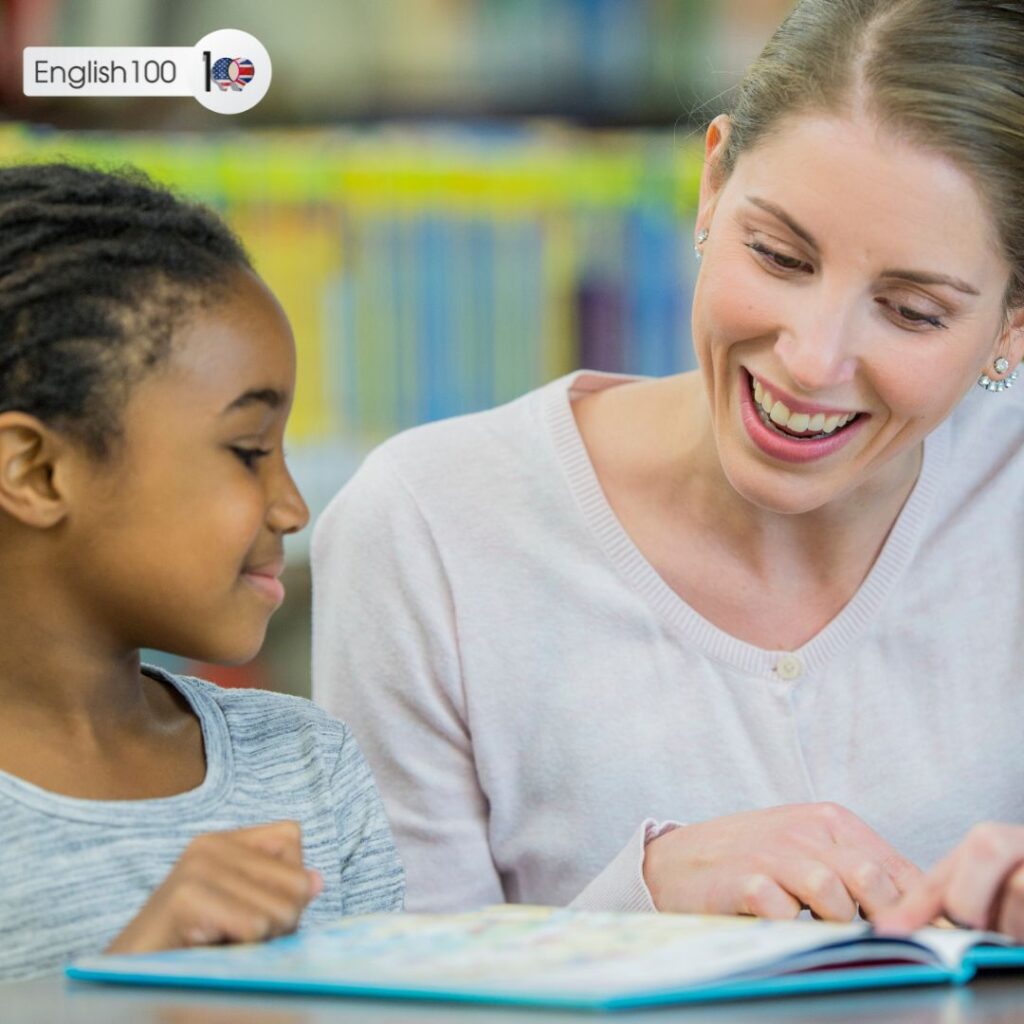If you’re an English Language Learner (ELL), you know that language learning can be challenging. Fortunately, there are strategies that can help make the process easier and more effective. In this blog post, we’ll explore four useful ELL strategies that can help you improve your language skills and successfully navigate the English-speaking world. From using visual aids to practicing with native speakers, these tips will give you the tools and techniques you need to excel as an ELL student or professional.
So whether you’re just getting started or looking to take your language skills to the next level, read on for some great advice on how to succeed as an ELL learner.
According to the National Education Association, ELL students will make up about 25 percent of the children in American classrooms by 2025. Teachers are tasked with helping these students develop English proficiency and meet the grade-level content requirements, in addition to all their other duties.
ELL Strategies:
ELL strategies, or English Language Learner strategies, are techniques and approaches used to support students who are learning English as a second language. These strategies aim to help ELL students develop their language skills and improve their academic performance.
Some common ELL strategies include providing visual aids and graphic organizers to support comprehension, using gestures and body language to reinforce meaning, incorporating hands-on activities and real-life examples to make the content more relatable, and providing opportunities for peer collaboration and discussion.
Additionally, scaffolding techniques, such as breaking down complex tasks into smaller, more manageable steps, can help ELL students build their skills gradually. These strategies are essential in creating an inclusive and supportive learning environment for ELL students, allowing them to thrive academically while also building their language proficiency.
English language learners should not be learning the fundamentals of English in isolation; they should be applying their developing language skills to rich academic content in all subjects.
1. Use Positive Gestures and Tone of Voice:

Using positive gestures and tone of voice are effective ELL strategies that can help students feel more comfortable and engaged in the classroom.
When teaching English language learners, it’s important to remember that communication is not just about words – body language and tone of voice also play a crucial role in conveying meaning. By using positive gestures, such as a smile or a nod of the head, ELL teachers can show support and encouragement to students.
Similarly, by using a warm and friendly tone of voice, teachers can create a welcoming atmosphere in the classroom. These small but powerful actions can make all the difference for ELL students who may be feeling overwhelmed or intimidated by the language barrier. By incorporating positive gestures and tone of voice into their teaching practice, educators can help ELL students feel more confident and motivated to learn.
2. Speak Slowly and Increase Wait Time

One of the most effective ELL strategies is to speak slowly and increase wait time. When teaching English Language Learners (ELLs), it is important to be mindful of their language proficiency level and adjust your speech accordingly. Speaking at a slower pace allows ELLs time to process the information being presented, which can improve comprehension and reduce frustration.
Additionally, increasing wait time after asking a question or giving instructions gives ELLs time to formulate a response or understand what is being asked of them. This strategy can also help build confidence in ELLs, as they feel more comfortable taking their time to respond without feeling rushed or pressured.
By implementing these simple but effective strategies, educators can help create a more inclusive and supportive learning environment for all students, regardless of their language background.
3. Encourage Self-monitoring
Encouraging self-monitoring is a key strategy for supporting English Language Learners (ELLs) in their language development. By teaching students to be aware of their own learning process and progress, they can take ownership of their language learning and feel more confident in their abilities.
This can be achieved by providing clear learning objectives, modelling the use of self-assessment tools, and giving students opportunities to reflect on their own learning.
Teachers can also provide regular feedback and praise, which can help build students’ confidence and motivation to continue learning. Ultimately, encouraging self-monitoring helps ELL strategies become more independent learners, setting them up for success both in and out of the classroom.
4. Consider Both Content and Vocabulary
When developing ELL strategies, it’s important to consider both content and vocabulary. Language learners need to understand not only the words being used but also the context in which they are being used. This means that teachers should aim to provide contextualized instruction that incorporates both content and language objectives.
One effective strategy is to use visuals and graphic organizers to help students make connections between new vocabulary and concepts. Teachers can also use real-world examples and hands-on activities to reinforce learning and engage students. Additionally, scaffolding techniques such as pre-teaching key vocabulary or breaking down complex sentences can help ELLs better understand the content.
By considering both content and vocabulary in ELL strategies, teachers can create a supportive learning environment that helps students build their language proficiency while also gaining a deeper understanding of academic content.
Some of the most effective English language learner strategies start with common sense and respect for cultural differences. Simply getting to know the students is considered to be an essential part of the process.
Instructional strategies for ELL students
Teaching English Language Learners (ELLs) requires instructional strategies that are inclusive, culturally responsive, and tailored to the unique needs of these students. Here are some effective instructional strategies for supporting ELL students:
- Create a Welcoming Environment
- Use Visual Aids
- Provide Language Models
- Use Multimodal Instruction
- Scaffold Instruction
- Provide Language Support
- Use Realia and Authentic Materials
- Offer Cooperative Learning Opportunities
- Provide Explicit Language Instruction
- Differentiate Instruction
By implementing these instructional strategies, educators can create inclusive and supportive learning environments where ELL students can thrive academically, linguistically, and socially.
Differentiation strategies for ELL students
Differentiation strategies are crucial for effectively supporting English Language Learners (ELLs) in the classroom. Here are some differentiation strategies specifically tailored to meet the diverse needs of ELL students:
- Language Proficiency Levels
- Language Models
- Scaffolded Instruction
- Varying Modalities
- Flexible Grouping
- Modified Assignments
- Language Support
- Cultural Relevance
- Individualized Instruction
- Ongoing Assessment and Feedback
FAQs:
1. What are strategies for ELL students?
ELL (English Language Learner) strategies are techniques and methods used by teachers to help students who are learning English as a second language. Some effective ELL strategies include:
- Visual aids
- Repetition
- Simplified language
- Multimodal learning
2. What are the most important strategies for teaching EFAL?
– Use a variety of teaching methods and resources to cater to different learning styles.
– Scaffold learning by breaking down complex tasks into smaller, more manageable steps.
– Provide ample opportunities for practice and repetition to reinforce learning.
– Incorporate real-life and authentic materials to make the learning experience meaningful and relevant.
3. How do I implement an ELL strategy in my company?
- Implementing ELL strategies in your company can help to improve the language fluency of your employees.
- Language learning is a critical skill for employees, and it can help to increase productivity and job satisfaction.
- An ELL strategy can include providing training and materials for employees, implementing a bilingual policy, and creating a supportive environment for ELL employees.
- ELL employees can benefit from having access to resources such as dictionaries, translation software, and online courses.
- By implementing an ELL strategy in your company, you can help to improve the overall quality of your workforce.
4. What are examples of ELL accommodations?
- Examples of accommodations that might be needed for ELL strategies students include providing extra time for reading or writing assignments, providing a reader or translator during class, or providing additional copies of materials.
- It is important to work with your teacher to identify the specific accommodations that are necessary for your student. Not all accommodations need to be made in class. Some accommodations may be best suited for after-school or extracurricular activities.
5. What are the types of ELL programs?
– Pull-out programs: Students are taken out of their regular classroom for a designated period of time to receive English language instruction.
– Sheltered instruction programs: Students receive instruction in English, but with modified content and language support to make it more accessible to non-native speakers.
– Dual language programs: Students receive instruction in both English and their native language, with the goal of developing bilingualism and biliteracy.
– Content-based ESL programs: English language instruction is integrated into content areas such as math, science, and social studies, allowing students to learn language skills while also learning academic content.
6. What are the 4 levels of ELL?
– Level 1: Beginning/Pre-production stage where students have very limited or no understanding of the English language.
– Level 2: Early Production stage where students can understand and produce short phrases or simple sentences.
– Level 3: Speech Emergence stage where students can engage in more extended conversations and express their thoughts with more complexity.
– Level 4: Intermediate Fluency stage where students have a good command of the English language, can understand and participate in more complex academic and social discussions.
All in all, incorporating an ELL strategy into your company can have a positive impact on the language fluency of your employees. By working with your teacher and implementing specific accommodations, you can help to ensure that all students feel comfortable learning English in a safe and supportive environment.
References:
- Innovative strategies for teaching English language learners. (n.d.). www.umassglobal.edu. https://www.umassglobal.edu/news-and-events/blog/innovative-strategies-for-english-language-learners
- Kaplan, E. (2019). 6 Essential strategies for teaching English language learners. Edutopia. https://www.edutopia.org/article/6-essential-strategies-teaching-english-language-learners/
- University of San Diego – Professional & Continuing Education. (2023). 11 Essential Strategies for Teaching English Language Learners [For Any Teacher]. University of San Diego – Professional & Continuing Education. https://pce.sandiego.edu/11-essential-strategies-for-teaching-english-language-learners-for-any-teacher/
